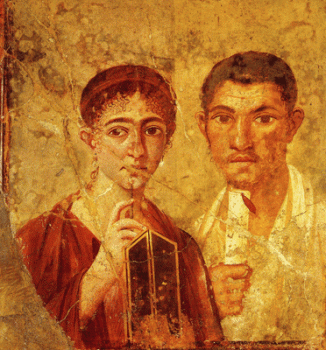American Journal of Archaeology | The Journal of the Archaeological Institute of America
You are here
Writing Paraphernalia, Tablets, and Muses in Campanian Wall Painting
October 2009 (113.4)
Writing Paraphernalia, Tablets, and Muses in Campanian Wall Painting
Writing implements featured in Campanian painting fall into two categories: the detailed and very realistic (as determined by comparison to their real-life counterparts) and the vague and fanciful. The former category appears in the instrumentum scriptorium still lifes and one tomb painting and helps to convey a sense of the world of negotium (the sober, and, especially legal and financial, business of the family); the latter appears in many other types of painting, including mythological paintings, paintings of Muses, and “portrait” paintings of women, and is here identified as associated with the world of otium (that of leisure, literary pursuits, and imagination). The famous “portraits” of women holding wooden tablets, such as the so-called Sappho and the Baker and His Wife, are therefore likely to depict Muses, and thus imaginary role-playing, rather than the real activities of real women.
Writing Paraphernalia, Tablets, and Muses in Campanian Wall Painting
By Elizabeth A. Meyer
American Journal of Archaeology Vol. 113, No. 4 (October 2009), pp. 569–597
DOI: 10.3764/aja.113.4.569
© 2009 Archaeological Institute of America


